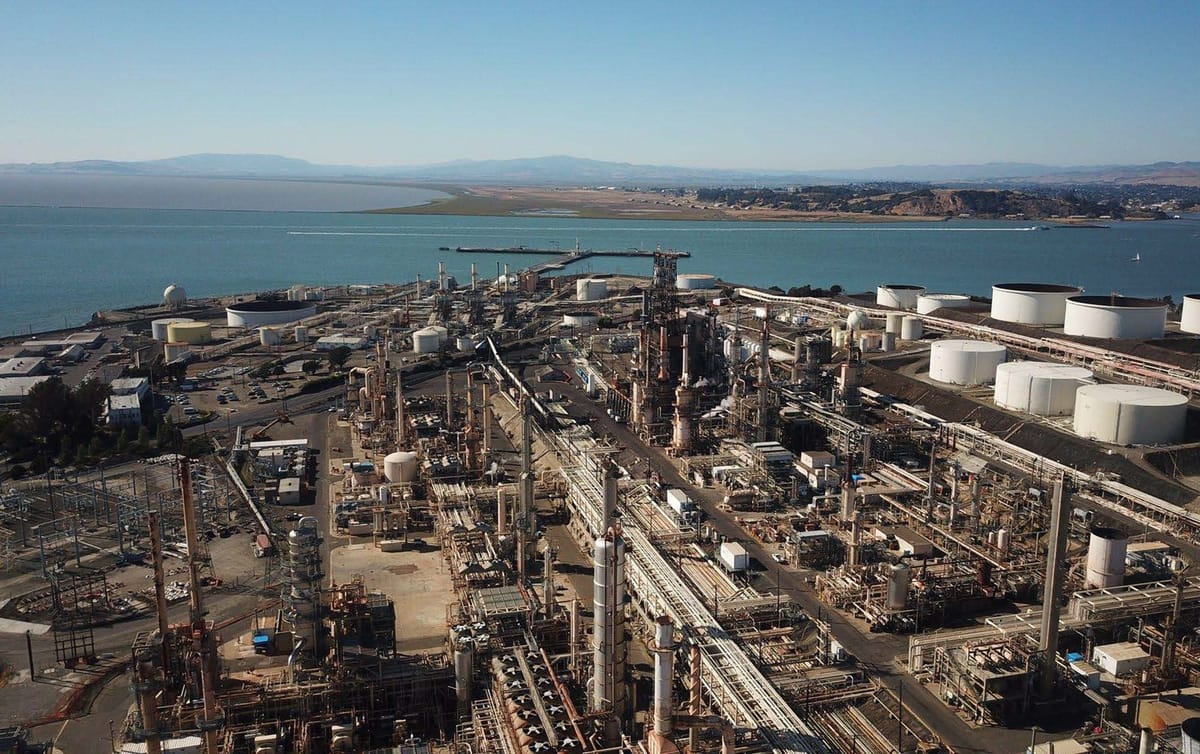Report on Bay Area Refinery Data Integrity Amidst Regulatory Revisions
Introduction
A significant issue has emerged concerning the accuracy of emissions data reported by industrial refineries in the Bay Area. Environmental advocacy groups are raising concerns as the Bay Area Air Quality Management District (BAAQMD) initiates a process to revise existing environmental regulations. This situation directly impacts the region’s ability to meet several key United Nations Sustainable Development Goals (SDGs).
Background: Regulatory Framework and Data Scrutiny
The BAAQMD is tasked with protecting air quality and, by extension, public health and the environment. The impending revision of its regulations is a critical opportunity to strengthen environmental protections. However, the efficacy of these regulations is fundamentally dependent on the accuracy of self-reported data from the refineries themselves. Environmental organizations are now questioning the veracity of this data, suggesting that pollution levels may be underreported, which could undermine the new regulatory framework.
Implications for Sustainable Development Goals (SDGs)
The controversy over data accuracy has profound implications for the achievement of multiple SDGs. The integrity of environmental reporting is a cornerstone for sustainable development, and any discrepancies challenge progress in the following areas:
- SDG 3: Good Health and Well-being: Inaccurate reporting of pollutants can conceal the true extent of public health risks, including respiratory and cardiovascular diseases. Ensuring clean air is essential for the well-being of communities living near industrial facilities.
- SDG 11: Sustainable Cities and Communities: The goal of creating inclusive, safe, resilient, and sustainable communities is compromised if air quality is not effectively managed. Transparent and accurate data is necessary to hold polluters accountable and protect urban and suburban environments.
- SDG 12: Responsible Consumption and Production: This goal calls for the environmentally sound management of chemicals and wastes throughout their life cycle. Accurate emissions reporting is a fundamental aspect of corporate responsibility and sustainable production patterns.
- SDG 13: Climate Action: Refineries are significant sources of greenhouse gas emissions. Underreporting can lead to a critical miscalculation of the region’s carbon footprint, hindering effective climate action strategies and policies.
- SDG 16: Peace, Justice and Strong Institutions: The credibility of regulatory bodies like the BAAQMD depends on their ability to enforce regulations based on reliable information. This situation highlights the need for strong, accountable, and transparent institutions that can ensure compliance and justice for affected communities.
Conclusion and Path Forward
The questions raised by environmentalists necessitate a thorough review of data verification processes. To align with the principles of the Sustainable Development Goals, the following steps are crucial:
- Independent verification of refinery-reported emissions data.
- Strengthening of monitoring and reporting requirements within the revised BAAQMD regulations.
- Increased transparency and public access to emissions data to foster accountability.
Addressing these data integrity concerns is paramount for the BAAQMD to enact meaningful regulations that protect public health, advance environmental justice, and ensure the Bay Area’s progress towards a sustainable and equitable future as outlined by the SDGs.
SDGs Addressed in the Article
-
SDG 3: Good Health and Well-being
The article discusses refineries, which are known sources of air pollution. The regulation of their emissions by the “Bay Area Air District” is directly linked to protecting public health from the adverse effects of poor air quality, which can cause respiratory illnesses and other health problems.
-
SDG 11: Sustainable Cities and Communities
The issue is located in the “Bay Area,” a major urban region. Managing air quality by regulating industrial polluters like refineries is a core component of reducing the adverse environmental impact of cities and ensuring they are safe and healthy places to live.
-
SDG 12: Responsible Consumption and Production
Refineries are industrial production facilities. The article’s focus on their reported data and upcoming regulations relates to ensuring sustainable production patterns by managing and reducing the release of pollutants into the environment.
-
SDG 16: Peace, Justice and Strong Institutions
The article highlights the dynamic between environmental groups, corporations (refineries), and a governing body (“Bay Area Air District”). The questioning of data accuracy and the revision of regulations point to the need for effective, accountable, and transparent institutions that can enforce environmental laws and ensure corporate accountability.
Specific SDG Targets Identified
-
Target 3.9: Substantially reduce the number of deaths and illnesses from hazardous chemicals and air, water and soil pollution and contamination.
The effort by the “Bay Area Air District” to revise regulations for refineries is a direct action aimed at controlling air pollution, which in turn helps reduce illnesses and deaths caused by exposure to hazardous emissions.
-
Target 11.6: Reduce the adverse per capita environmental impact of cities, including by paying special attention to air quality.
The entire context of the article—regulating refinery emissions within the Bay Area—is a specific example of a local authority paying special attention to air quality to mitigate the environmental impact of industrial activity on a city or urban region.
-
Target 12.4: Achieve the environmentally sound management of chemicals and all wastes throughout their life cycle… and significantly reduce their release to air, water and soil.
Revising regulations for refineries directly addresses the need to manage and reduce the release of pollutants into the air, which is a key aspect of this target for minimizing adverse impacts on human health and the environment.
-
Target 16.6: Develop effective, accountable and transparent institutions at all levels.
The fact that “Environmentalists are questioning the accuracy of data reported by the refineries” highlights a demand for accountability and transparency. The Air District’s role in revising regulations is an example of an institution working to be effective in its mandate to protect the environment.
Indicators for Measuring Progress
-
Implied Indicator: Annual mean levels of fine particulate matter (e.g., PM2.5) in cities (Indicator 11.6.2)
The “data reported by the refineries” that is being questioned would almost certainly include measurements of air pollutants like particulate matter. The accuracy of this data is crucial for tracking progress on air quality and is therefore an implied indicator.
-
Implied Indicator: Hazardous waste generated per capita and proportion of hazardous waste treated (related to Indicator 12.4.2)
While the article mentions air pollution specifically, the “data reported by refineries” would encompass the total volume of pollutants released. This data serves as a direct indicator of whether their release into the air is being reduced, in line with Target 12.4.
-
Implied Indicator: Existence of independent and effective environmental regulatory bodies
The article points to the existence and function of the “Bay Area Air District” as a regulatory body. The process of environmentalists questioning data and the district revising regulations implies a system of oversight and public participation, which serves as a qualitative indicator of institutional effectiveness and accountability (related to Target 16.6).
Summary Table of SDGs, Targets, and Indicators
| SDGs | Targets | Indicators (Implied from the Article) |
|---|---|---|
| SDG 3: Good Health and Well-being | 3.9: Reduce deaths and illnesses from pollution and contamination. | Data on refinery emissions that contribute to air pollution-related illnesses. |
| SDG 11: Sustainable Cities and Communities | 11.6: Reduce the adverse per capita environmental impact of cities, focusing on air quality. | Accuracy of reported data on air pollutant concentrations (e.g., PM2.5) in the Bay Area. |
| SDG 12: Responsible Consumption and Production | 12.4: Environmentally sound management of chemicals and wastes, and reduced release to air, water, and soil. | Volume of pollutants reported as released by refineries. |
| SDG 16: Peace, Justice and Strong Institutions | 16.6: Develop effective, accountable and transparent institutions. | The process of public questioning of corporate data and the regulatory response by the Air District. |
Source: vallejosun.com







